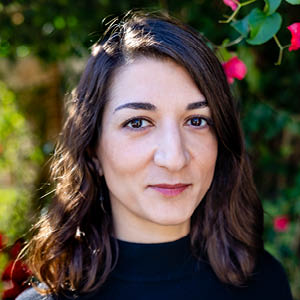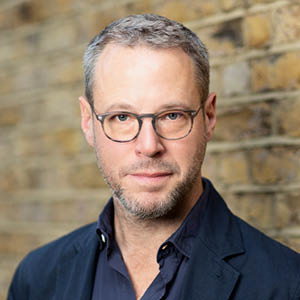Part 1: A Power Reckoning on Trust in Philanthropy, From Both Sides of the Pond


Both believe that a shift to more trusting, power-aware relationships between foundations and nonprofits is necessary for civil society to be a true force for equitable, democratic, and effective social change.
In recent years, momentum for such a shift has grown in both the U.S. and the U.K. (Orensten & Buteau, 2020; IVAR, 2019). Yet there’s a nagging feeling for both Shaady and Ben that we’ve been on the precipice before, only to find the sector snapping back into old routines and mindsets. The pushback against high levels of funder control over and demands on nonprofit organizations is as old as the idea of “strategic philanthropy” itself (Jagpal, 2009; Eisenberg, 2013; Patrizi & Heid Thompson, 2011). What will it take this time around to see a true transformation?
In the spirit of learning out loud, Shaady and Ben sat down with learning and evaluation consultant Tanya Beer to explore the shifts they’re seeing, and the potential threats to meaningful change, as both initiatives work to push philanthropy past this tipping point. By comparing their experiences so far, they hope to inspire and inform how not only the TBP Project and IVAR move forward, but also how funders and others in the movement might join forces to influence philanthropy globally.
As Director of the TBP Project in the United States, Shaady works on promoting trust-based values and supporting funders to embody them in mindset and practice. As Director of IVAR, Ben leads a parallel effort in the U.K., hosting a community of funders committed to sustaining the changes they made to their grantee relationships and requirements in response to the COVID-19 crisis. Both are energetic and optimistic leaders with long histories in the nonprofit sector.
All signs indicate that the field is approaching a tipping point, if not an outright reckoning (Buckley, 2020; Beer, Patrizi, Coffman, 2021). Participation in both initiatives is growing rapidly, as is pressure from social critics of philanthropy, other philanthropy serving organizations, and nonprofit leaders themselves.
Just this past summer, Kathleen Enright of the Council on Foundations (COF) — the largest philanthropic membership organization in the world, with more than 1700 member foundations — signaled that COF is joining this movement with an op-ed in the Chronicle of Philanthropy (2021) titled “How Philanthropy Can Make the Quantum Leaps Society Is Counting On.”
The quantum leap Enright refers to is a future version of philanthropy that contributes significantly to the resolution of deep social and economic disparities, rather than making incremental improvements for some at best, or exacerbating those disparities at worst. Enright summarizes the argument for this change quite simply: “More trust, bigger impact.”
Philanthropy’s primary role is to fund, support, and advocate for the nonprofits and communities doing the hard work of making our communities and our society better. The more we let go [emphasis added] in that role, the more others can lead. The more we let others in, the better our ideas and relationships become. That’s how we go from making incremental gains to quantum leaps (Enright, 2021).
This language sounds straightforward and innocuous. Why wouldn’t philanthropy want to leap into greater impact?
“[F]unders discovered that the sky did not, in fact, collapse when they responded to the urgency of the moment by reducing reporting requirements and giving grantees the freedom to use the money as they saw fit.”
Calls for collaborative work and shared leadership have become truisms in the field over the past decade. The potential positive consequences of a power shift among funders and nonprofits became all the more evident over the past 18 months as nonprofits struggled to respond quickly to the compounding crises of COVID-19, racial inequity, growing social rifts, and climate catastrophes. Many funders discovered that the sky did not, in fact, collapse when they responded to the urgency of the moment by reducing reporting requirements and giving grantees the freedom to use the money as they saw fit.
In fact, many discovered that grantees’ work — as well as their own — became better as they shifted into relationships built on trust, openness, and respect for the distinct expertise and know-how of nonprofits that are tightly connected and accountable to their communities (Buckley & Firth, 2020).
On a tactical level, the trust-based philanthropy movement calls for a change in the bureaucratic requirements and transactional relationships that have become the norm across the sector.
Through a common set of expectations and routines, foundations constrain the ability of nonprofit organizations to respond flexibly to the evolving needs of communities according to their own wisdom and expertise rather than the foundations’. These processes are stifling, and they need to change.
But, on a deeper level, tactical changes in the grantmaking process and paperwork are only one step towards a far more transformative change that requires funders to do their own soul-searching and self-reflection — including examining their biases around what makes an organization “trustworthy.”
“A trusting relationship between funder and nonprofit is ultimately about shifting power, not shifting paperwork,” shares Shaady. “In the guise of risk management, due diligence, and good strategy, funders often exert high levels of control over nonprofit self-determination and decision-making.” Requirements and restrictions can remove power and autonomy from organizations that are more experienced than foundations in reading and responding to the needs and interests of the communities they represent.
This is particularly true for organizations that are embedded in and accountable to communities experiencing inequities. The trust-based philanthropy movement is inviting the philanthropic sector to imagine what’s possible if they transform their relationships with nonprofits, from transactional, with one-way accountability from nonprofit to funder, to more collaborative, relational, and power-conscious.
“There are so many visionary efforts and organizations that are overlooked or underfunded because they don’t fit the mold of what philanthropy deems trustworthy,” Shaady notes. “If philanthropy truly wants to advance social impact, the sector must be willing to examine how our biases, structures, and cultures may be inadvertently getting in the way of that vision.”
After the outbreak of the coronavirus pandemic, many U.K. funders began to transform their relationships with grantees, dismantling onerous reporting structures and proactively offering a range of financial and technical support. Others overhauled their processes, streamlining application forms, and radically speeding up decision making. More tested the waters of unrestricted funding. Some even publicized their willingness to meet fundraising costs in support of the effort to keep going.
“This new mood of agility, trust, and common endeavor points the way to a healthier and more collaborative relationship between funders and the nonprofit sector,” shared Ben. “Sustaining and further developing this progressive practice is the goal of our open and trusting grantmaking community.”
These shifts mean foundations must let go of the idea that they are best positioned to decide how change should happen, who is best positioned to lead that change, and perhaps even which outcomes are most important to prioritize. For philanthropic leaders whose life experience gives them regular access to power and limited views of the realities of structural inequity, trusting nonprofit leaders with these decisions opens the door for work that can feel uncomfortable, risky, or even controversial.
“As funders experience the loss of power, the temptation to revert to old ways grows stronger. But by giving up control, and letting go of limited definitions of expertise … roles evolve, and the work itself becomes more meaningful, with a greater emphasis on learning over compliance.”
As funders experience the loss of power, the temptation to revert to old ways grows stronger. But by giving up control, and letting go of limited definitions of expertise, something else is gained. Foundation staff and trustees’ roles evolve, and the work itself becomes more meaningful, with a greater emphasis on learning over compliance.
Foundations making the shift will also discover that their workflow, internal communication habits, staff performance expectations, and technological systems all serve to minimize risk to foundations while maximizing nonprofit accountability to the foundation’s view of change. In essence, an uneven power dynamic has been embedded within many foundations’ operations, systems, and cultures — thus compounding the “stickiness” of the current, dominant approach to philanthropy.
As a result, much of TBP Project’s and IVAR’s work centers on these strategic questions:
Funders may adjust the mechanics of grantmaking — from application and reporting requirements to grant restrictions — to make life easier for grantees. And they may shift to trusting more in the leadership of nonprofits to pursue their own strategies. However, if funders aren’t simultaneously applying a racial equity lens to their work, they will reinforce a longstanding sector-wide pattern of under-funding and overlooking the very organizations that have accountable relationships with communities experiencing inequity.
These organizations, often led by leaders of color and others from marginalized groups, are often subjected to heightened scrutiny and distrust from a sector that is steeped in a deep-rooted history of racial injustice. This history has given way to systems, processes, and expectations that tend to favor legacy organizations with seasoned nonprofit leaders who have built-in networks and know how to navigate the philanthropic ecosystem. So, when predominantly white funders do not intentionally recognize how implicit biases shape their decision-making, this only exacerbates existing structural inequities in the nonprofit sector.
In the U.S., a wide-ranging public discussion about racial justice is underway, and philanthropy is not immune. Nonprofit and philanthropic staff, including leaders of color, are illuminating the ways in which predominantly white funders both intentionally and unintentionally have held onto power and reinforced inequitable systems (Villanueva & Daniel, 2021). And on both sides of the pond, many are pushing for a candid reckoning about the source of endowments from industries and labor practices that helped create many of the problems philanthropy now aims to address (Lingayah, 2021; Justice Funders & Resonance Collaborative, 2019).
This question about philanthropy’s role in not just “lightening the burden” for nonprofits, but fixing past and current harms can feel threatening to many funders. In the U.S., we are seeing both resistance to and backlash against this conversation from some portions of the sector (Rendon, 2021). Nevertheless, the TBP Project has concluded that if its end goal is to contribute to a more equitable and democratic sector that is equipped to address complex social challenges, then it must explicitly foreground power and racial equity in its work.
In the U.K., this conversation is newer and less direct (and is of course shaped by a different history and set of social and economic dynamics). While IVAR’s Open and Trusting initiative does not intend to prioritize the comfort of established, majority-white foundations over these critical conversations, it is still grappling with how to bring power and equity into the conversation without losing partners who may not be temperamentally ready for the conversations taking place in the U.S.
For both TBP Project and IVAR, one of the strategic questions for the future is:
There are multiple initiatives cropping up around the world that sound very similar. Some, like the TBP Project and IVAR’s Open and Trusting Grantmaking, share the same underlying values, if not the same language. Others use the same or similar language, but do not share the underlying value of shifting relationships to become more equitable and power-conscious. As funders are attracted to a concept and direct resources towards it, the philanthropic services and consulting industry is increasingly likely to mirror that language in order to sell services that may or may not reflect the deeper philosophy and principles underlying the work.
The philanthropic sector is no different from other sectors facing pressure for institutional change: rhetoric moves quickly to mirror new trends while actual change may lag or never take hold. Whether it’s innovation, collaboration, learning, performance, systems change, or any number of other terms that have spread through the sector, philanthropy has a tendency to grab onto new language to re-frame the work without spending the time to fully consider and implement what the concept means for how they function before moving on to the next emerging concept. This co-optation has left nonprofits to be rightfully cynical about new language and public commitments from philanthropy.
Paradoxically, the spread of common language can make it more difficult to make real change in the field, as the language covers up the reality of practice. This is particularly true where philanthropic behavior, process, and decision making are not transparent to the outside world. Funders, nonprofits, and philanthropic support institutions need to keep challenging one another to unpack and make explicit the values and assumptions that underly their language and work on equitable, open, and trusting relationships.
In the face of this challenge, the TBP Project and IVAR are considering how to ensure that the spread of the language about trust in philanthropy is backed by real action. They wonder:
In Part 2 of this blog series, we’ll share how the Trust-Based Philanthropy Project and IVAR are working to address these challenges, and their recommendations for others doing the work.



Beer, T., Patrizi, P., & Coffman, J. (2021). Holding Foundations Accountable for Equity Commitments. The Foundation Review, 13(2). https://scholarworks.gvsu.edu/tfr/vol13/iss2/9
Buckley, E. (2020) A simple ambition for grant-making: unrestricted and light-touch, IVAR: London. https://www.ivar.org.uk/a-simple-ambition-for-grant-making-unrestricted-and-light-touch/
Buckley, E. and Firth, L. (2020). Towards more trusting, flexible philanthropy. Trust and foundation news, issue 123. Association of Charitable Foundations: London.
Enright, K. (2021, July 26). How Philanthropy Can Make the Quantum Leaps Society Is Counting On. Chronicle of Philanthropy. https://www.philanthropy.com/article/how-philanthropy-can-make-the-quantum-leaps-society-is-counting-on
Eisenberg, P. (2013). ‘Strategic philanthropy’ shifts too much power to donors. Chronicle of Philanthropy. https://www.philanthropy.com/article/strategic-philanthropy-shifts-too-much-power-to-donors
IVAR. (2019). Duty to Care? How to ensure grant-making helps and doesn’t hinder. IVAR: London. https://www.ivar.org.uk/research-report/duty-to-care/
Jagpal, N. (2009). Criteria for Philanthropy at Its Best: Benchmarks to Assess and Enhance Grantmaker Impact Real Results. National Committee for Responsive Philanthropy: Washington D.C. https://www.ncrp.org/about-us/philanthropy-at-its-best
Justice Funders & Resonance Collaborative. (2019). Resonance: A framework for philanthropic transformation: Funders how did we get here? Institutional philanthropy in context. http://justicefunders.org/resonance/how-did-we-get-here
Lingayah, S. (2021) It takes a system: The systemic nature of racism and pathways to systems change. Beyond Race/Race on the Agenda: London. https://www.rota.org.uk/publications/systemsreport2021
Orensten, N. & Buteau, E. (2020) Foundations Respond to Crisis: Toward Greater Flexibility and Responsiveness? Center for Effective Philanthropy: Cambridge, MA. https://cep.org/portfolio/foundations-respond-to-crisis3
Patrizi, P., & Heid Thompson, E. (2011). Beyond the Veneer of Strategic Philanthropy. The Foundation Review, 2(3). https://scholarworks.gvsu.edu/tfr/vol2/iss3/6/
Rendon, S. (2021). The Philanthropy Roundtables CEO Opposes Woke Philanthropy. Chronicle of Philanthropy. https://www.philanthropy.com/article/the-philanthropy-roundtables-ceo-opposes-woke-philanthropy-prompting-some-grant-makes-to-flee-and-others-to-give-more
Villanueva, E. & Daniel, V. (2021). White Philanthropy, Here’s how to guarantee real change happens. Chronicle of Philanthropy. https://www.philanthropy.com/article/white-philanthropy-heres-how-to-guarantee-real-change-happens